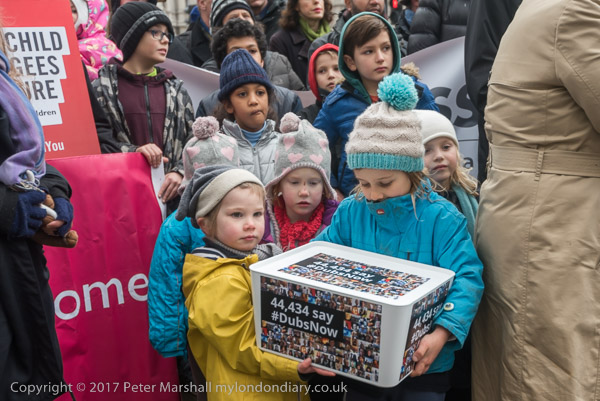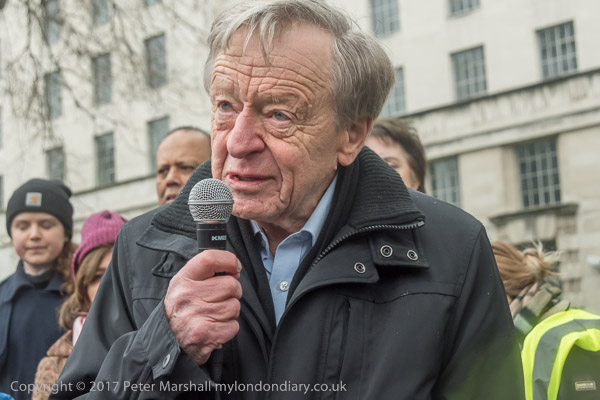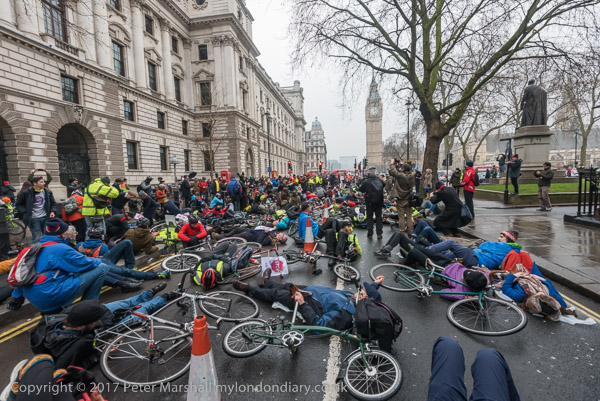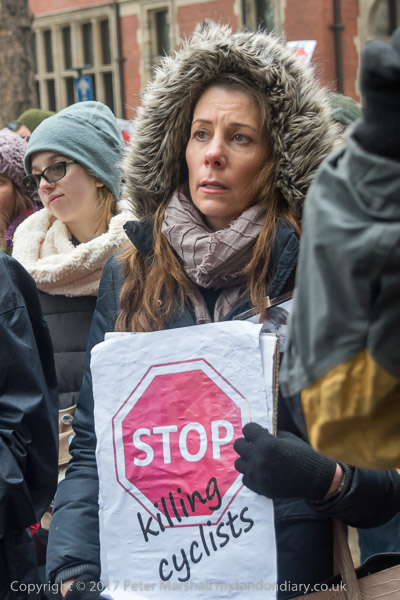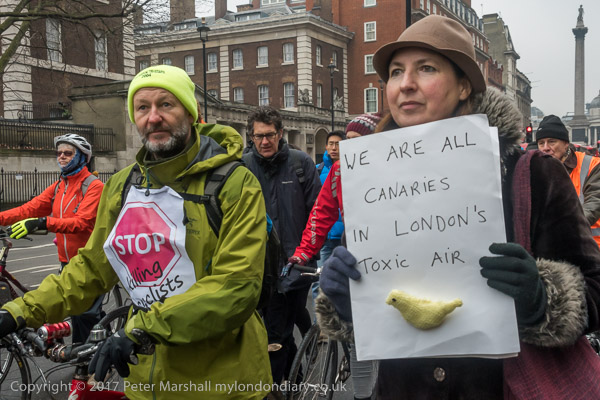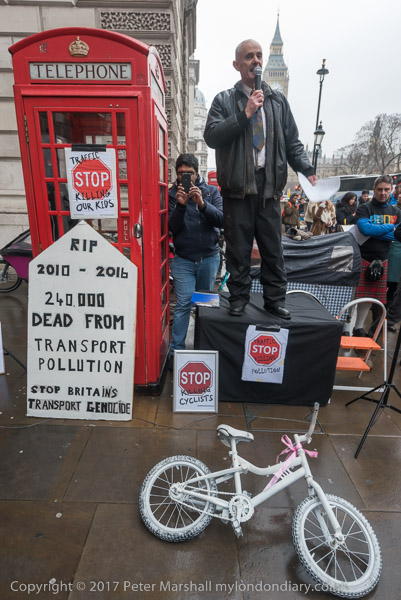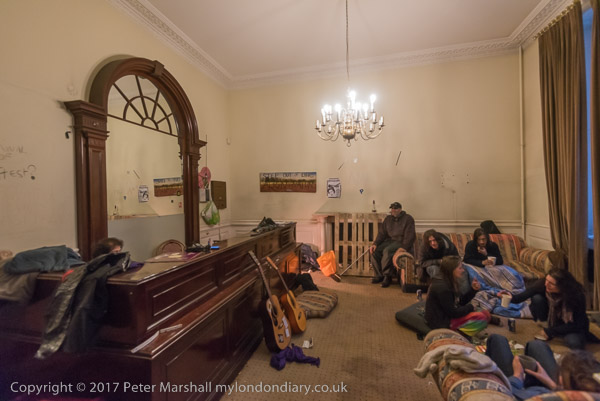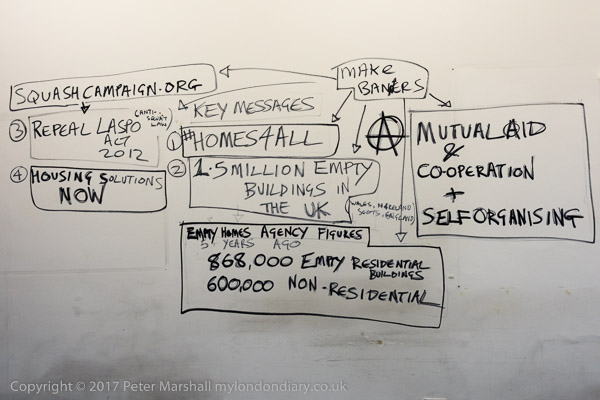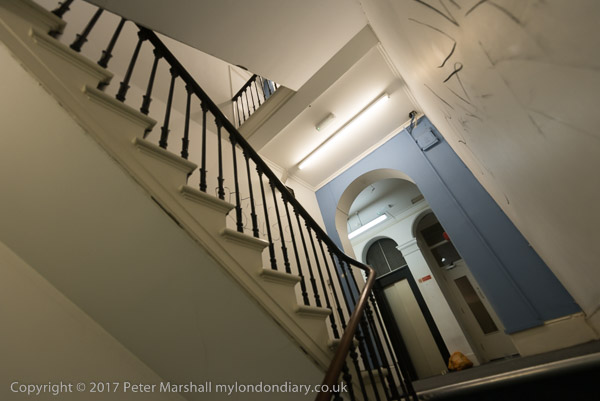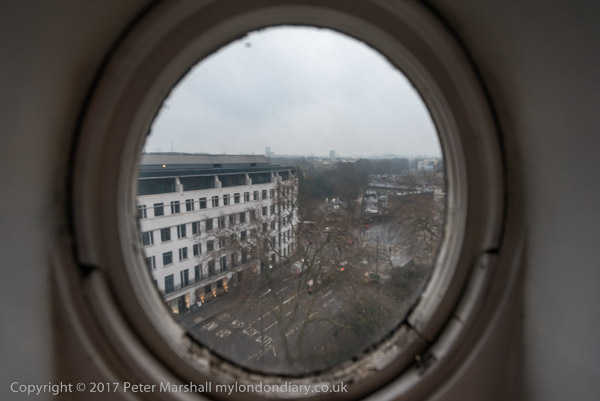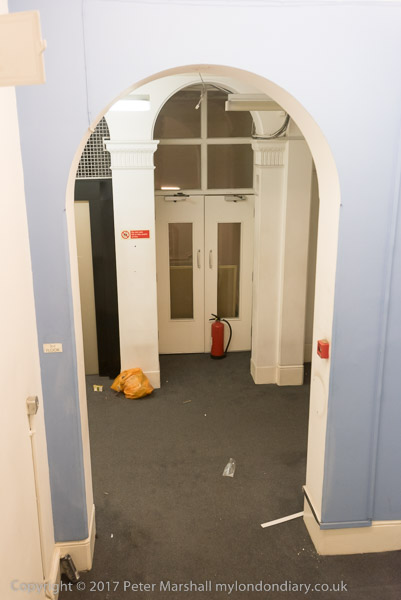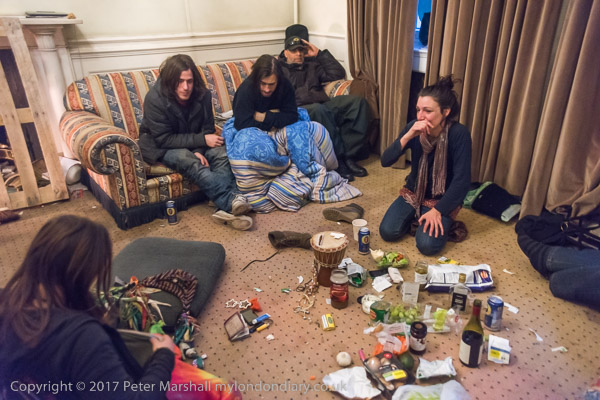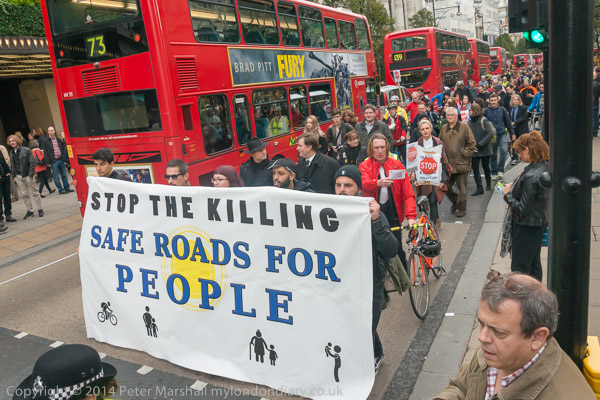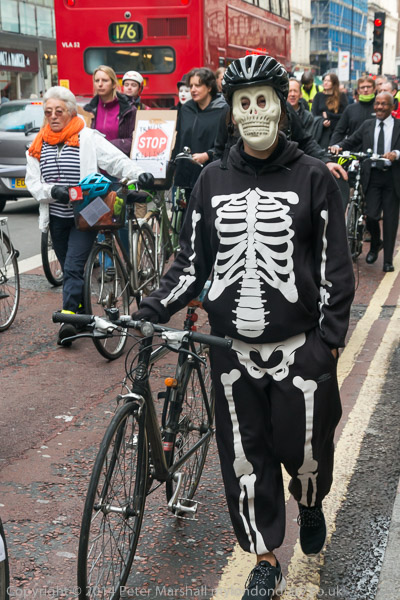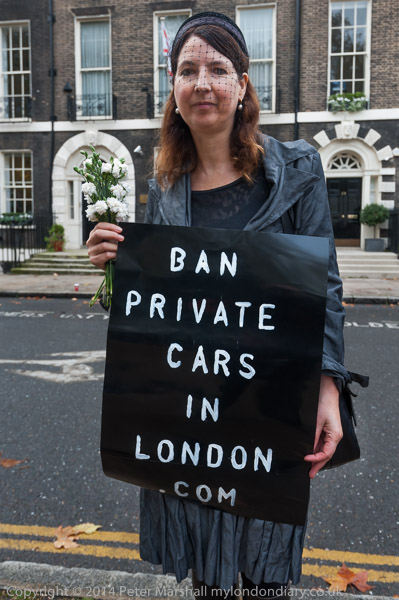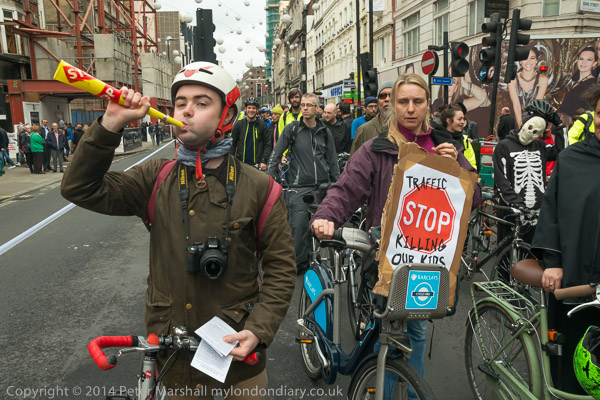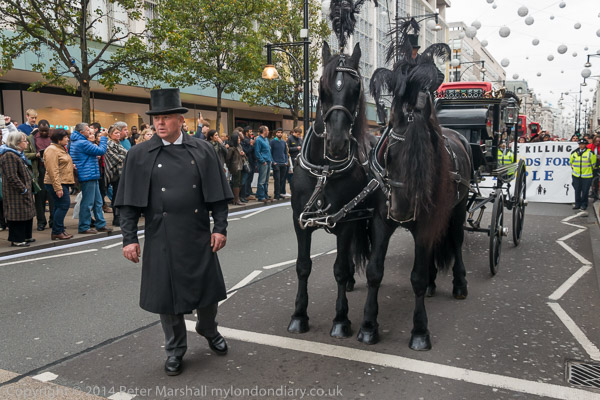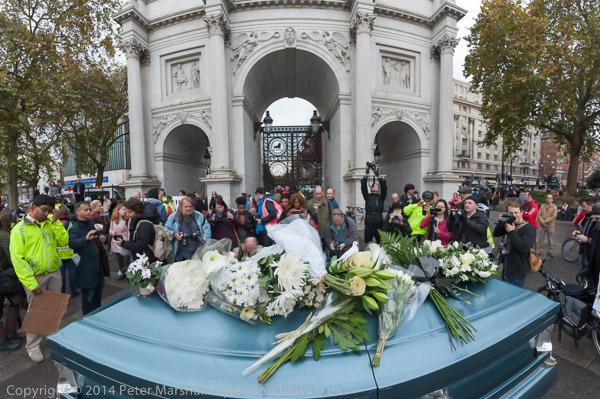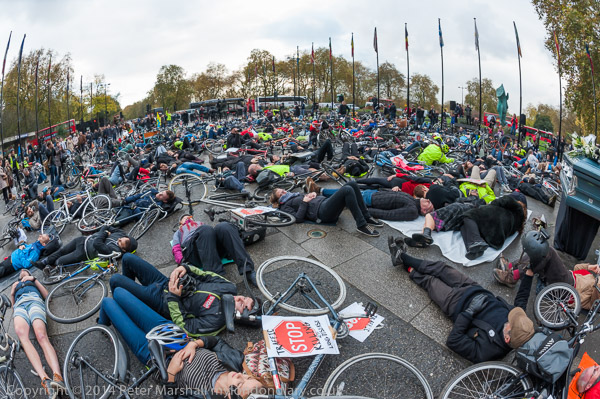DSEi Arms Fair Protest Festival: Saturday 9th September 2017 was a busy day for protests at the two road entrances to the ExCeL centre where preparations were being made for the worlds’s largest arms fair, DSEI, the Defence & Security Equipment International, backed by the UK government where arms companies and arms dealers sell weapons to countries around the world including many repressive regimes.
DSEI Festival Morning at the East Gate
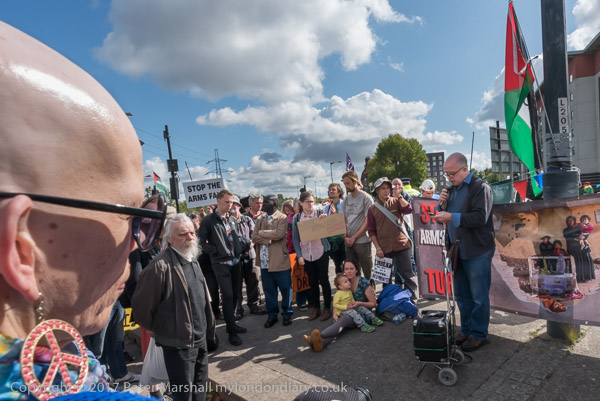
Several hundred people had turned up in the morning for a festival day at the East gate for a programme of speakers, workshops, spoken word, choirs and groups.
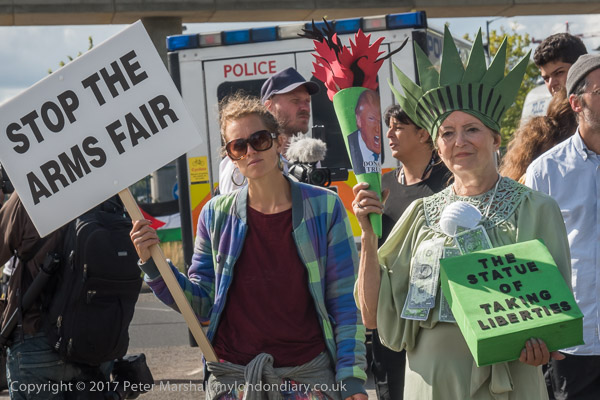
People crowded onto the road when lorries arrived to enter with equipment for the show, but police moved them to the side to allow the lorries to continue into the Excel Centre.
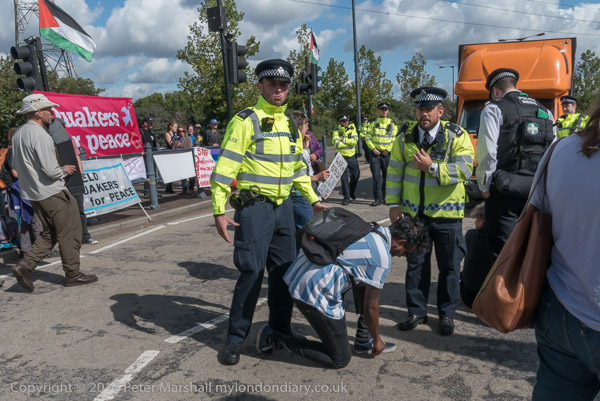
By lunchtime things at the West gate seemed to be fairly quiet and a ‘critical mass’ group of cyclists were on their way to the East gate and I decided to take the DLR and meet them there.
Festival of Resistance – DSEI West Gate
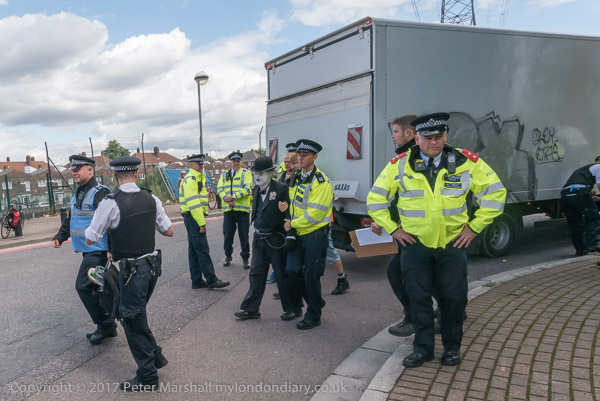
I arrived at the West gate just as police were leading away Chaplin look-alike mime protester
Charlie X who had locked himself to a lorry. He told me had made the mistake of having the keys with him in a pocket which made their job a little easier.
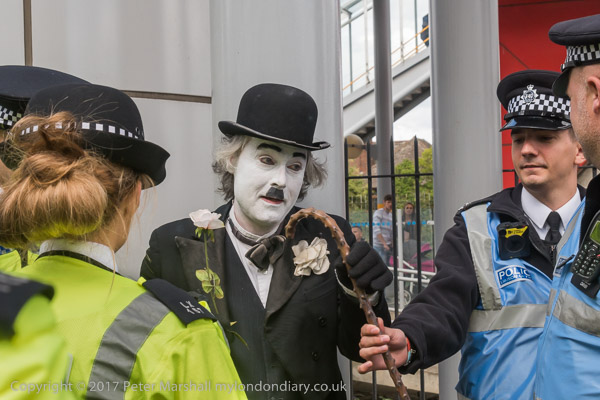
A supporter handed him a flower and police gave him back his walking stick before leading him away under arrest to a police van.
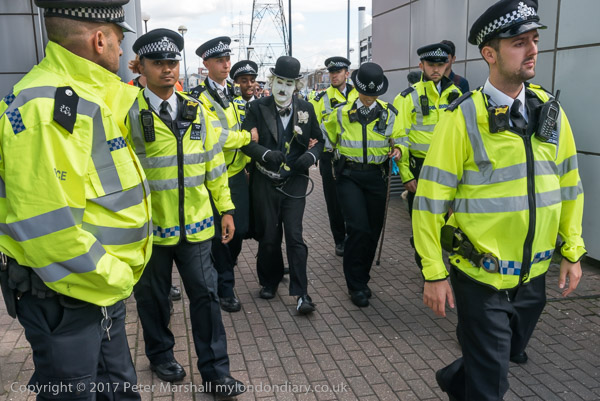
Although I kept well out of the way of the police while taking these pictures, some of them don’t appreciate being photographed and I got pushed out of the way – but not before I had taken a series of pictures.
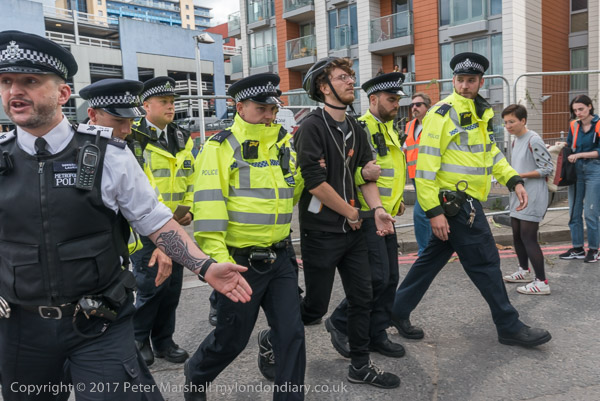
The critical mass cyclists were standing on the roundabout at the entrance to the site and police noticed that one of them had his bike lock around his neck. They talked with him and he told them he needed to lock his bike if he left it anywhere to prevent it being stolen. Probably all the cyclists had locks with them for the same reason, but police decided to arrest him for carrying a lock. Almost certainly this was the stupidest arrest of the day.
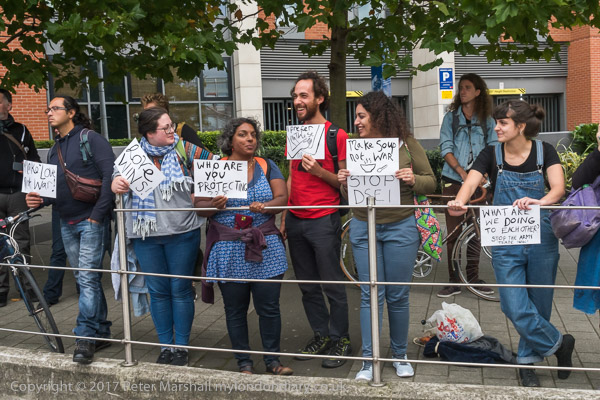
Other people held posters against the arms fair, danced to music and a choir sang. I decided to return to the East gate.
DSEI East Gate blocked
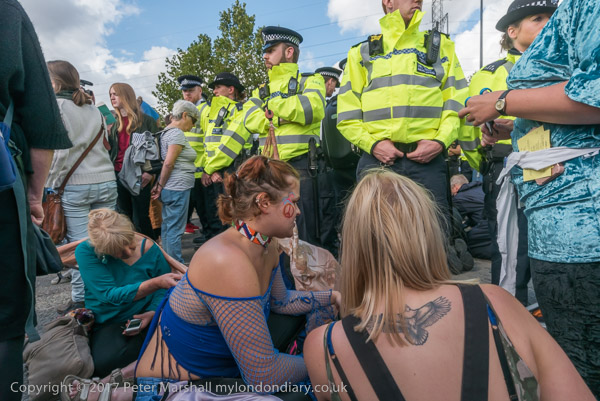
Back at the East Gate I found the road blocked by a lock-in, with two people joined through a pipe which the police were struggling to remove. The couple were surrounded by a large group of police blocking my view but I managed to take a few pictures between their legs.
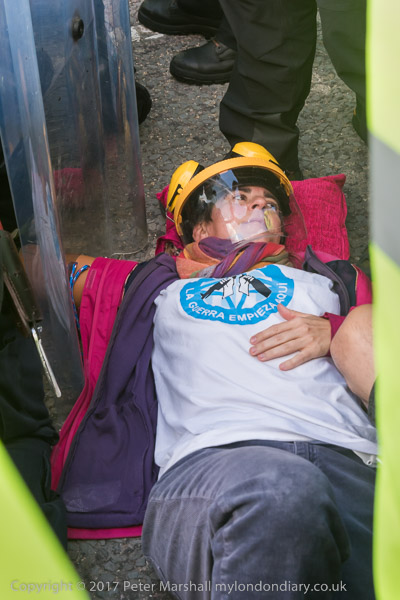
Other protesters sat on the blocked road as police hammered into the concrete around the linked arms of the locked pair, slowly and patiently removing it to avoid injuries.
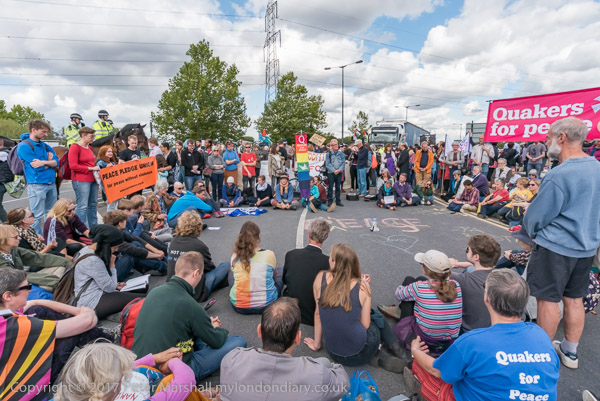
A group of Quakers led a religious service on the blocked road. Mounted police arrived to help with clearing the road and people were told they would be arrested if they didn’t move. There were several arrests with people led away to waiting police vans a short distance away, as well as the two who had locked themselves together who police eventually separated.
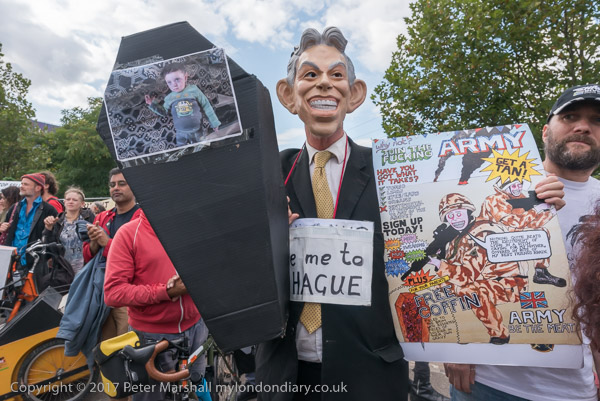
The lorry waiting behind the lock-on still could not move as a man was lying underneath its wheels. Police tried to handcuff him but took some time to manage to get his hands together.
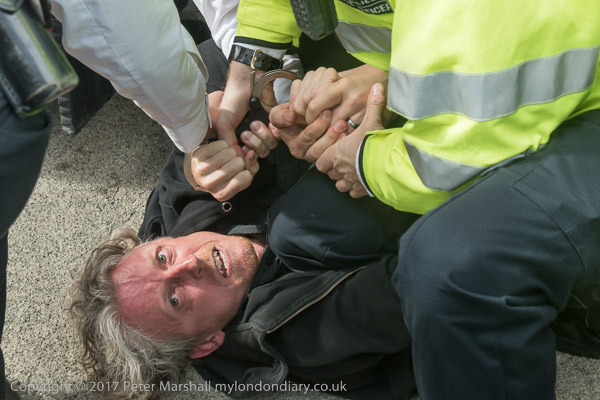
Eventually he was carried away. The performances on the roadside continued with a crowd listening to poetry from Janine Booth, but others moved onto the road to block lorries. People danced on the other carriageway and the Strawberry Thieves choir sang though without their normal conductor who had already been arrested.
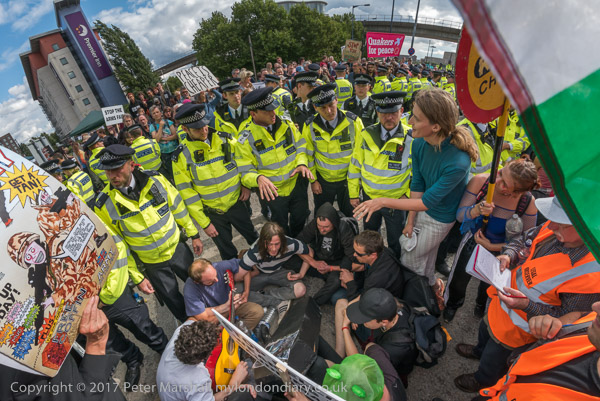
Police cleared most of the road, but there was still a ring of people with a placard ‘STOP SELLING ARMS TO SAUDI ARABIA’ and a guitar. They linked arms to make it difficult for police to remove them and were still there half an hour later when I had to leave. At the DLR station I could hear the sound of a musical protest on the walkway by East London Against Arms Fairs and went briefly to take a few pictures before my train arrived.
More about the day’s events and many more pictures on My London Diary:
DSEI East Gate blocked
Festival of Resistance – DSEI West Gate
DSEI Festival Morning at the East Gate









